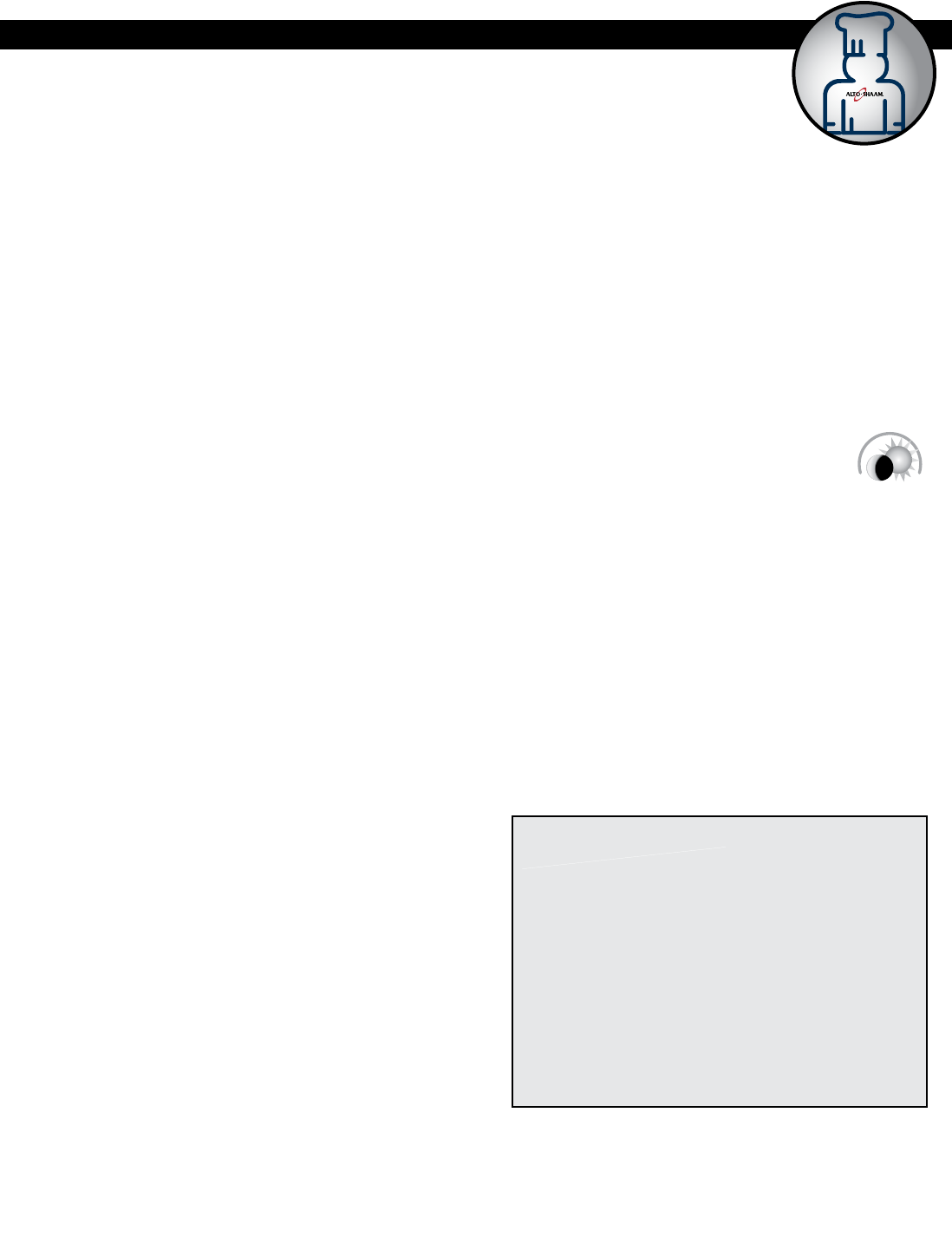Troubleshooting guide
Table Of Contents

coo kin g guideli nes - delu xe co ntr ol • 17
GENERAL OPERATION - DELUXE CONTROL OVENS
OPERATION
CHEF OPERATING TIPS
1. For cooking specific products, refer to individual
cook and hold instructions.
2. When cooking at 250°F (121°C), it takes
approximately one hour for the cooking
temperature to decrease to the selected holding
temperature. During this one hour time period,
the product will continue to cook.
3. The cooking times in this guide are based on meat
taken directly from a refrigerated temperature
of 38° to 40°F (3.3° to 4.4°C), and placed in a
preheated oven. Adjustments must be made
for cooking products at other than refrigerated
temperatures.
4. Place the curved edge of the shelf toward the back
of the oven.
5. Adjust the inside door vents as indicated in the
individual cooking procedure selected.
6. It is recommended the oven door remain closed
during the cooking cycle. Opening the door will
only increase the length of time necessary to
cook the product.
7. Puncturing an item with any sharp instrument
may introduce bacteria inside the product.
Avoid using a fork to handle products, and
always use standard sanitary methods when
handling any food item.
8. Use a thermometer to check the internal
temperature of a product. Be certain to sanitize
the thermometer before each use.
9. Aged meat will cook faster, shrink more, and
cannot be held as long as fresh meat. Because
of the tenderizing capabilities of the oven, aged
meat or tenderizing agents such as M.S.G. are
not necessary, and are not recommended.
10. When cooking full loads, never cook below the
second shelf spacing from the bottom of the
oven compartment.
11. Fully clean the oven interior, drip pan, shelves,
and side racks on a daily basis.
12. Since there is no air movement inside the
Halo Heat
®
low temperature cooking and
holding oven, condensation will form on the
inside of the door during operation and may
leak out of the oven door vents. This is a
normal operating condition, however; any
condensation spilling on the floor should be
periodically wiped as a safety precaution. There
is an External Drip Tray included as standard
with most ovens.
13. Insert drip pan directly on
the bottom surface of the
oven compartment.
14. Drip pan overflow is a condition caused
by cooking some cuts of beef to an internal
temperature in excess of 130°F (54°C). The
External Drip Tray will help alleviate some of
this overflow problem. There is also an extra
large drip pan available as an option for the
1000-TH series ovens.
15. Overflow may also be caused by overloading the
oven compartment. DO NOT OVERLOAD THE
OVEN. Follow the recommended load capacities
listed in each individual procedure.
16. For maximum product tenderizing
and to reduce labor during peak
preparation hours, overnight cook
and hold is highly recommended for
many products. Refer to individual
cooking instructions.
17. As a guide when cooking rare beef roast in the
300-TH/III counter top oven, we recommend:
• Food probe should be inserted in the
food on the lowest shelf
• Set cook temperature to 250°F (121°C)
• Set probe temperature to 90°F (32°C)
• Set hold temperature to 140°F (60°C)
or 135°F (57°C)
The Alto-Shaam staff includes corporate
executive chefs who welcome questions.
You are invited to contact anyone on our
staff by phone (800.558.8744) or e-mail
through the Contact Us section of our
web site (www.alto-shaam.com) for help
with any cook and hold procedure.
need
some
helP
?
O
V
E
R
N
I
G
H
T










